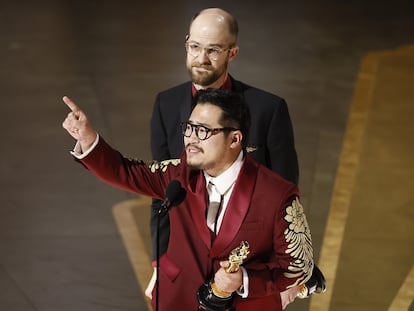The unsung Hollywood action heroines who paved the way for Michelle Yeoh
The ‘Everything Everywhere All at Once’ Oscar-winning actress serves as recognition for the women who have propelled this movie genre for decades, especially the pioneers who were already thrilling silent film audiences
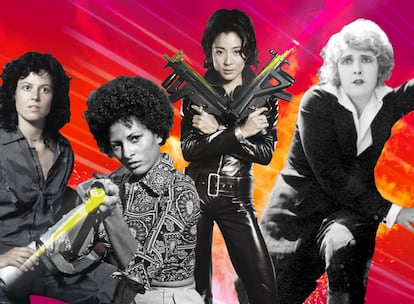
Oscar-winner Michelle Yeoh, Academy Award nominee for Black Panther: Wakanda Forever Angela Bassett and Viola Davis, who won several awards for The Woman King have put the spotlight back on female stars in action films. But the appearance of actresses in such movies is not a recent phenomenon; it’s an interest that has rekindled after each film in which an actress plays a part that was previously closed off to women. However, it is worth remembering that women were the original action movie stars. At the beginning of the twentieth century, a group of now-forgotten actresses jumped on moving trains, pulled off difficult chases on horseback and slid down dangerous cliffs.
A couple of months ago, Jennifer Lawrence sparked outrage on social media when she proclaimed that her role in The Hunger Games made her the first-ever action heroine. Social media users responded by throwing numerous counterexamples back in Lawrence’s face, including the great action movie star Cynthia Rothrock.
Jennifer Lawrence: "I remember when I was doing Hunger Games, nobody had ever put a woman as the lead in an action movie, because it wouldn't work."
— Kung Fu Man (@KungFuMan316) December 8, 2022
lolwut pic.twitter.com/SBPmwQ4iG4
Rothrock, now 66, is still delivering flying kicks and has 14 films pending release. She is a legendary figure among action movie fans but largely unknown to the general public. “When I first started doing action films it was very rare for women to be fighting; it was normally, ‘Well, you have to be the assistant to the guy as he is the main fighter, and you just help out and he’ll save you in the end’… I think that now people are a little more accepting that yeah, a woman could hold her own and she could fight,” she told The Action Elite. Forty years ago, when Michelle Yeoh was still Michelle Kwan, she teamed up with Rothrock in a classic of the genre, Ultra Force 2, a title that gave rise to a subgenre known as “girls with guns” in which men and women fought equally and under identical conditions.
Through long hours at the gym and her courage in action scenes, Yeoh earned the respect of the male co-stars who once looked askance at her. Take, for example, an accident in which she was nearly run over by Jackie Chan. I was so lucky, I landed on my butt instead of my head. If I had gone the other way, that would have been the end.” After the incident, Yeoh just kept on filming. In the blockbuster action film industry, though, movies with female leads were not made with any desire for diversity or inclusion in mind, only profitability. Simply put, Yeoh and Rothrock appealed to audiences, period.
The real pioneers
Like other aspects of women’s history, few people know that initially action films were dominated by actresses. Today’s stars are heirs to a group of early-twentieth-century pioneers, including actresses, directors, producers, scriptwriters, stuntwomen, location scouts, makeup artists and costume designers. They did it all in their films, a fact that is even more striking when we recall that women were not even allowed to vote at the time.
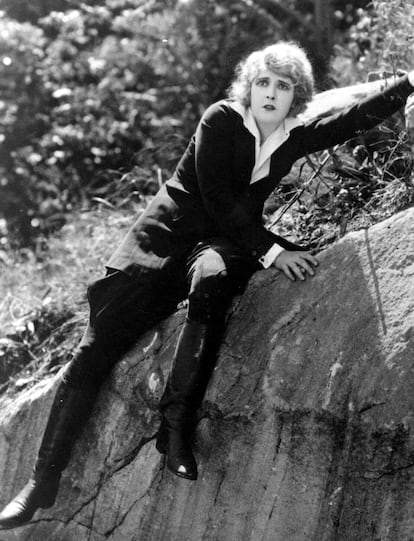
In the 1910s, fifteen-minute adventure shorts were all the rage. Their first great star was Gene Gauntier (1885-1966), who appeared in The Girl Spy: An Incident of the Civil War (1909). In the short film, she played a Confederate woman who dressed as a man to infiltrate Union lines and commit acts of sabotage. She was joined by Mary Fuller (1888-1973), with her adventure series What Happened to Mary, and Helen Holmes (1893-1950), who starred in the railroad adventure series The Hazards of Helen. Holmes played a fearless railroad employee who confronted dangers—derailments, robberies and crumbling bridges—every week.
“You’d think a pretty girl like Helen would be afraid of spoiling her looks,” her husband, J.P. McGowan, told a reporter. “But nothing worries her.” Historians have counted nearly 40 women who filmed action movies at the time, but none achieved the fame that Pearl White (1889-1938) did with the massive success of the series The Perils of Pauline, in which she suffered a new misadventure every week. Her immense popularity brought her to Spain. In Madrid, she performed at the Teatro Apolo and delighted the press by telling them that she was not afraid to travel alone: “Women don’t need to fear anything when a small pistol is hidden in the bottom of their pocket.”
Her Spanish tour took her to Mieres, in the heart of the Asturian mining region. According to the local press there, her fans were disappointed to see that she was no longer the rosy-cheeked heroine with whom they had fallen in love on the screen. “We took her down from the pedestal on which our illusions had placed her,” recounted one spectator. She was only 36 years old at the time. A hundred years ago, it seems, audiences were just as unforgiving of women’s bodies as they are today.
None of the female action film pioneers survived the advent of movies with sound. Most of them ended up doing stunts; they appeared in circuses, in the air or in rodeos. Others became stuntwomen, performing the most dangerous scenes for Hollywood’s new faces. Despite being the first action stars and enjoying international renown, that fame was as short-lived as their careers.
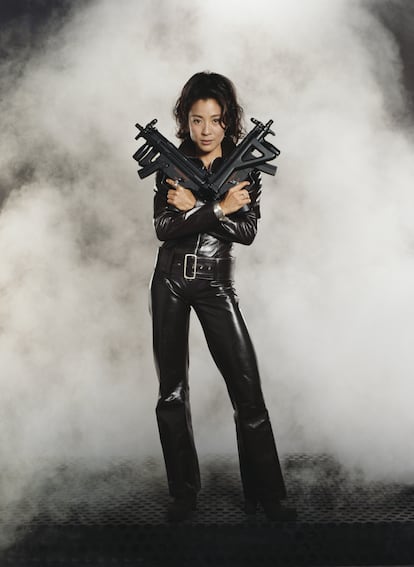
Puritanism plagued Hollywood after early industry scandals erased fearless women and returned them to traditional roles, both on and off the screen. “In what’s now known as the pre-[Hays] Code era of Hollywood films, women were smart, professional, ambitious, forthright, opaque, tricky and even criminal. They blackmailed bosses, had babies out of wedlock, seduced other women,” Andi Zeisler observes in her book We Were Feminists Once: From Riot Grrrl to CoverGirl®, the Buying and Selling of a Political Movement. The Hays Code turned women into passive subjects, but there were always those who managed to slip through the cracks, like Rosalind Russell in His Girl Friday (1940), Barbara Stanwyck in Cattle Queen of Montana (1954) and Katharine Hepburn in almost any film.
Western films were dominated by the archetype of the hypermasculine hero, while women were reduced to two roles: the good-hearted prostitute who runs the local brothel and the timid eastern schoolteacher confronting the new world’s rigid codes. There were few exceptions, but some films added a new twist to the genre, such as William A. Wellman’s Caravan of Women (1951), the story of a group of single women and widows who go to a remote Western town, dodging all sorts of dangers, to meet their future suitors. Thanks to that movie, many saw women wielding weapons and fending for themselves in the West for the first time. In the 1990s, there was an attempt to revive the genre with women at the helm, but both Bad Girls (1994) and The Quick and the Dead (1995) were released to little fanfare.
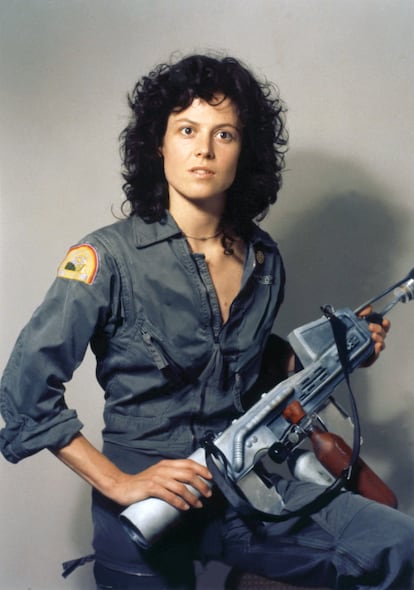
Sigourney Weaver’s casting as the 1980s most celebrated action heroine, Ripley in the Alien movies, was serendipitous, much as Yeoh’s was in Everything Everywhere All at Once. The leading role in the latter film had been written with Jackie Chan in mind; when he declined, the role went to Michelle Yeoh, a change that added another layer of genius to the Daniels’ fascinating film. In Alien’s case, producer Alan Ladd Jr. suggested that Ripley could be a woman. At the time, it was an unprecedented gesture; in 1979, a woman hadn’t been the lead in a science fiction film, at least not in one without an erotic pretext, as in Barbarella (1968). Screenwriter Dan O’Bannon had prefaced his script with a revolutionary note: “The crew is unisex and all parts are interchangeable for men or women.” As Collider points out, the gender-neutral writing is one of the secrets to its success. “None of the [characters] fall into the usual clichés associated with the genre, like its female characters becoming a damsel in distress or its male characters being try-hard macho men who jump into every situation guns blazing in a vain attempt to impress the opposite sex. "
In the horror genre, women commonly play leading roles and they are celebrated scream queens. But in recent decades these characters have been less like scream queens and more avengers of their own nightmares. Indeed, many have become superheroines, as in the latest Halloween installments with recent Oscar winner Jamie Lee Curtis, as well as the Scream franchise’s Sidney Prescott.
Harder boundaries to break
In an even more neglected genre, Pam Grier reigned supreme as the absolute star of blaxploitation films. These movies were primarily produced by and for African Americans. In the early 1970s, low-budget, adrenaline-pumping productions like Foxy Brown (1974) and Coffy (1973), to which Quentin Tarantino later paid a tribute in Jackie Brown (1997), made Grier an idol. Her characters, which had previously been reserved for black men, took the initiative and solved problems. Angela Bassett appeared as a worthy heir to Grier in Kathryn Bigelow’s Strange Days (1995). Bassett has never shied away from action movies, as evidenced by her most recent characters, Ramonda Queen of Wakanda and Athenea Grant, the hardened police chief in Ryan Murphy’s show 911.

Aside from horror films, 1980s cinema lacked powerful female characters and represented the height of ultra-masculine action films starring the likes of Sylvester Stallone, Arnold Schwarzenegger and Jean-Claude Van Damme. While men were active agents in the films, women were only there to be rescued by those same men. But the early 1990s saw a resurgence of women who could carry an action movie on their own. Some of these films had particularly dark plots, such as Jamie Lee Curtis in Kathryn Bigelow’s Blue Steel (1989), Anne Parillaud in La Femme Nikita (1990), Jodie Foster in The Silence of the Lambs (1990) and, of course, Linda Hamilton as Sarah Connor in Terminator 2: Judgment Day (1991). There have also been major flops, such as Cutthroat Island (1995)—in which many Hollywood actors refused to participate because they would not accept a woman, Geena Davis, in the leading role—and the underrated The Long Kiss Goodnight (1996), starring the same actress.
Recently, at a Variety event, Jennifer Lawrence spoke about women in action movies. “I remember when I was doing Hunger Games, nobody had ever put a woman in the lead of an action movie because it wouldn’t work – because we were told girls and boys can both identify with a male lead, but boys cannot identify with a female lead.” Her comments sparked a backlash on social media, but aside from her assertion that she was the first female lead in an action film, she was right. Despite all the progress that has been made since the first action stars, superhero franchises were still apprehensive about female roles, even though there were already hits like Tomb Raider starring Angelina Jolie and Resident Evil with Milla Jovovich.
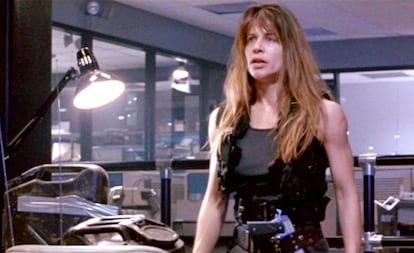
Giants like Marvel and DC are especially cautious in this regard and fear that female protagonists will generate a backlash. Black Widow (2021) was the only Marvel movie released simultaneously in theaters and on streaming platforms, which Scarlett Johansson considered an insult. Captain Marvel (2019) faced harassment from those who saw it as a concession to a woke agenda.
Wonder Woman’s (2017) success made DC forget the 1980s flop Supergirl, and the former was rewarded with a sequel. There will also be a prequel that centers on the adventures of Imperator Furiosa, Charlize Theron’s character in Mad Max: Fury Road (2015), who stole the show from the rest of the cast. Theron, who has become an unexpected action heroine thanks to Atomic Blonde, The Old Guard and Fast & Furious saga, is now set to make her debut as the Marvel heroine, Clea. “The first time I saw Sigourney Weaver play Ripley everything changed for me,” the actress said at Comic Con in 2020. “It was like the world opened up and the possibilities were endless...there’s a responsibility to hand that baton over, to keep that door open [for future generations.]”
Sign up for our weekly newsletter to get more English-language news coverage from EL PAÍS USA Edition
Tu suscripción se está usando en otro dispositivo
¿Quieres añadir otro usuario a tu suscripción?
Si continúas leyendo en este dispositivo, no se podrá leer en el otro.
FlechaTu suscripción se está usando en otro dispositivo y solo puedes acceder a EL PAÍS desde un dispositivo a la vez.
Si quieres compartir tu cuenta, cambia tu suscripción a la modalidad Premium, así podrás añadir otro usuario. Cada uno accederá con su propia cuenta de email, lo que os permitirá personalizar vuestra experiencia en EL PAÍS.
¿Tienes una suscripción de empresa? Accede aquí para contratar más cuentas.
En el caso de no saber quién está usando tu cuenta, te recomendamos cambiar tu contraseña aquí.
Si decides continuar compartiendo tu cuenta, este mensaje se mostrará en tu dispositivo y en el de la otra persona que está usando tu cuenta de forma indefinida, afectando a tu experiencia de lectura. Puedes consultar aquí los términos y condiciones de la suscripción digital.
More information
Archived In
Últimas noticias
Most viewed
- Sinaloa Cartel war is taking its toll on Los Chapitos
- Oona Chaplin: ‘I told James Cameron that I was living in a treehouse and starting a permaculture project with a friend’
- Reinhard Genzel, Nobel laureate in physics: ‘One-minute videos will never give you the truth’
- Why the price of coffee has skyrocketed: from Brazilian plantations to specialty coffee houses
- Silver prices are going crazy: This is what’s fueling the rally

